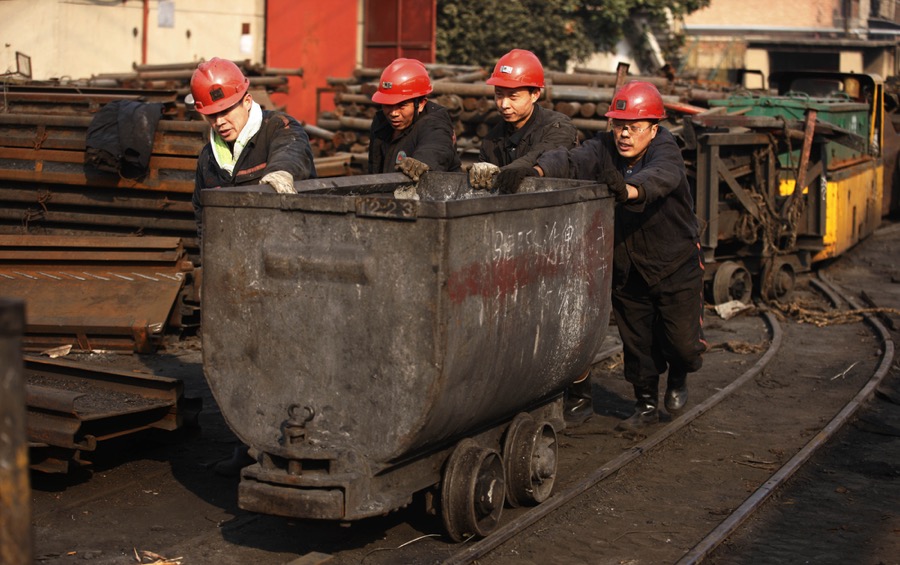Chinese coal industry sees earnings explode in 2016

China recently reported rising coal industry earnings. The Chinese National Bureau of statistics mentioned a growth of “157 percent in the first 11 months of 2016”, while industries such as oil and gas drilling along with power supply saw profits decline in the subsequent period.
This continued use of coal mirrors the rise in coal-fired power plants under construction or completed by China and India, African nations, and many European countries (Germany and Britain are shockingly big users of coal) as well. According to the International Energy Agency(IEA), global coal demand growth is slowing, but at least growing until at least 2020, the equivalent of an increase of 3.8 million-barrels-oil per day. There are reasons why coal will continue to rise in use.
According to the International Energy Agency(IEA), global coal demand growth is slowing, but at least growing until at least 2020, the equivalent of an increase of 3.8 million-barrels-oil per day.
Earnings were so strong in China that factory inflation spiked to a five-year high because of coal, which allowed their manufacturers: “to cut debt, invest more, and delay efforts to reduce excess capacity.” Coal in China and elsewhere continues to make investors and governments money. Yet China has promised to stop increasing emissions by 2030, and attempt to get one-fifth of required electricity from renewables while continuing to rely on coal and other fossil fuels for the remainder of their growing energy needs.
Moreover, economics will drive the debate while mechanisms that were agreed on in the Paris Climate Agreement (PCA) prove to be expensive, hard to quantify, and difficult to pay for in the near and distant future. Leaders in Poland, Australia, South Korea and Japan now believe that new coal plants in the works can meet tough climate regulations through efficiency and new technology.
But a new study by the World Wide Fund for Nature (WFF) and Ecofys doesn’t agree with that assessment. Russell Gold, the lead energy reporter for the Wall Street Journal, makes the case in his book: The Boom; that if environmental groups would place natural gas on equal footing with renewables, a possible lowering of coal use and emissions is doable.
On the continuation that the PCA is being ignored, the World Energy Outlook 2016 from the IEA: “projects in its ‘New Policies Scenario’ that over the next 35 years, the amount of electricity the Chinese produce from coal will increase by 4.3 percent.” But an interesting twist adds to the intrigue and opportunity for investment possibilities to exist.
China, Japan, and South Korea are leading the way in “adopting the latest super-critical and ultra-super-critical low-emission-coal technology.” This process operates at higher temperatures, pressures and increases coal’s electricity capacity by 30 percent which: “enables new technology power stations to generate more electricity while emitting less CO2, particulates, sulfur dioxide and nitrogen oxides.” Ironically China will have a coal-based economy while being one of the largest users and investors in the world of renewable energy.
What about the U.S. and its use of coal and advocating for a cleaner future without coal? America is already a much cleaner and more efficient user of energy and this is where many nations of the world take issue. The United States has four times the economic output per tonne of carbon dioxide emissions compared to India and five-and-a-half time compared China. Incredibly large discrepancies, and for coal not to make an impact, both China and India along with most of Asia and Africa would need substantial reductions in emissions to come from them, not the U.S.
Practically speaking, it is hard to imagine these countries along with Eastern European nations to opt for emission reductions, instead of lower electric bills. Long-term economic analysis dictates that mitigation will come from financial feasibility in growing economies, and not doing away with coal. Oren Cass of the Manhattan Institute noted the PCA, “resulted in nothing more than a pledge and review process,” and not real emission cuts through verification, certification and severe punishment for non-compliance.
Coal isn’t going anywhere, least of all in China. And the geopolitical situation in China has Premier Xi only gaining more strength, and not giving up power when his current term expires. This means Premier Xi will continue ramping up coal use and looking for cleaner, more efficient coal technology for the ever-growing and ever-changing Chinese economy.
One can only hope the Chinese and others follow the U.S. model and opt for natural gas over coal to produce results that only the Americans have found in how to truly reduce carbon emissions. Coal may be inexpensive and abundant, but only natural gas provides what the Kyoto Protocol wanted and the PCA believes it will achieve moving forward. While not popular, coal could still see some great returns in the near term. The Chinese, Indians, most of Asia, Africa, and even some Europeans seem to agree.
By Todd Royal for Oilprice.com
{{ commodity.name }}
{{ post.title }}
{{ post.date }}



Comments